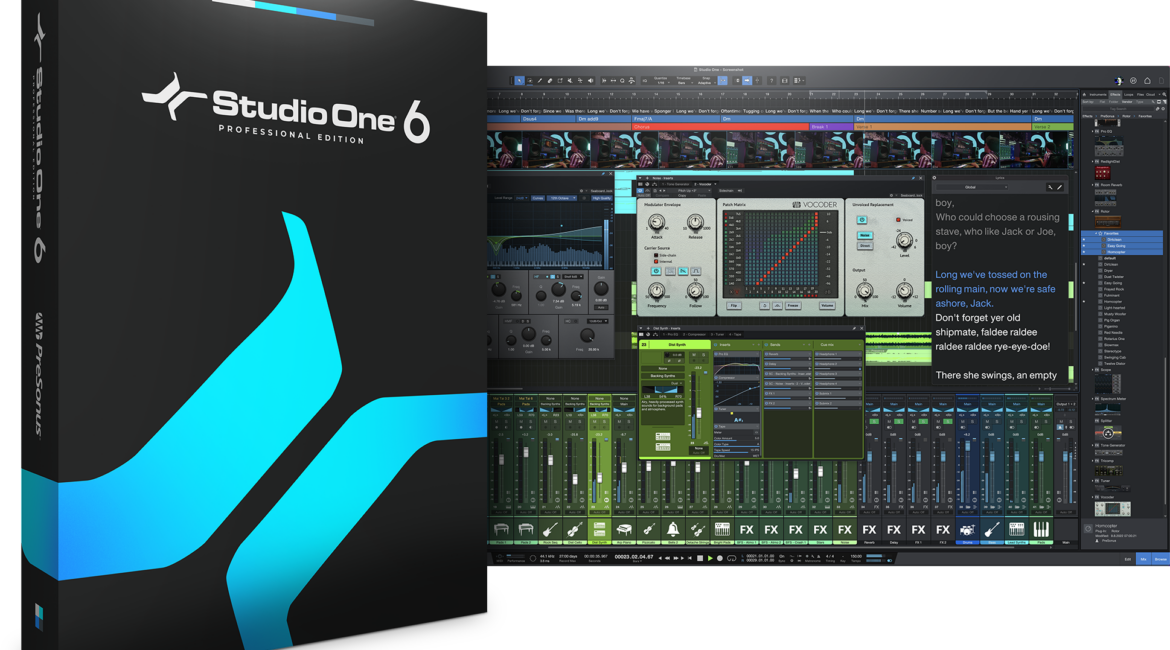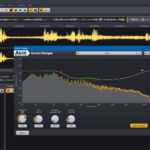Review by Graeme Hague
The holy grail of Digital Audio Workstations has always been a single program that can do everything you need. That may seem obvious, but it’s not as easy to find as you might expect. During the early years of DAW releases, different developers chose to focus on certain aspects of the recording process. Some DAWs were powerhouse MIDI software that allowed every conceivable MIDI parameter to be wrangled into doing anything, while the audio side of things was fairly straightforward. Other DAWs were the exact opposite, providing extensive audio recording facilities and hardly bothering with MIDI at all. Then you had the dedicated wave file editors that offered precise, almost surgical manipulation of the audio file down to the smallest sample size but couldn’t multi-track.
Over time, all these programs consolidated the various standard DAW functions into their software to become capable across the board of most studio requirements. However, a lot of the legacy menu functions—outdated processes and plugins that had to be kept available for existing long-time users—meant these DAWs were chockful with a bunch of obsolete options hardly anyone used anymore. The GUIs could be seriously daunting.
As a relative newcomer to the industry, first launching Studio One back in 2009, PreSonus had the opportunity to study DAW technology and develop a studio recording application that focused on what musicians and engineers really needed in a DAW, and to avoid the more esoteric functions that were mostly gathering dust on the menu bars.
That’s been PreSonus’ mantra ever since, carefully evolving Studio One over the next decade with improvements that had real uses and addressed modern workflows that recording studios were adopting. Yes, there have been plenty of functions added, catering for “power users”, that will have the rest of us scratching our heads, but on the whole, Studio One remains a straightforward, intuitive DAW that anyone can quickly understand, and at the same time has all the bases covered.
The release of Studio One 6.0 brings some innovative advances to several existing features—this version has an emphasis on refining some functions with well-thought-out enhancements—and one new capability that should definitely interest readers here, and caps off that concept of an all-in-one DAW.
The latter is the introduction of a true video track. Studio One has supported video for quite some time, but only with a video player interface. Now there’s an actual track with progressive thumbnails along the timeline the same as NLE video software such as MAGIX’s Vegas. Basic editing is possible, like cut-and-paste or delete, and you can bring in as many clips as you like onto that one track. PreSonus is quick to point out it’s not a full-featured video editor, but there are no limits to composing music or voice-overs perfectly in sync with any mish-mash of film that’s thrown at you, and at the end you can export a finished video in several popular codecs. For me, this feature is like the last piece of the puzzle that makes Studio One a complete DAW.

“Along with enhancing some of the existing plugins, the new video track is the last piece of the puzzle to make Studio One 6.0 a true, fully featured DAW for videographers looking to sync music or voice-overs.”
The improvements to existing functions are across a range of plug-ins and work spaces, and listing them all here is likely just going to make your eyes glaze over. Suffice to say that PreSonus has come up with clever ways to make these functions work even better—it’s not about fixing things that were broken. Of note is the Pro EQ3, which adds dynamic controls to the EQ bands. Simply put, you can adjust the EQ bands as per normal but add a threshold setting similar to a compressor that determines when the EQ kicks in—it’s a bit like a multiband compressor in reverse, and it’s going to be everyone’s go-to EQ over a master buss. There’s a new De-Esser plug-in which is simple, yet impressive with its results. Some De-Essers can be daunting in operation and still not get the job done. Studio One’s De-Esser can be practically left on the default settings and you’ll hear a difference. The Mixer Section now has a “fader flip” function. This possibly doesn’t make much sense unless you’re familiar with live, digital mixing consoles and the ability to switch through layers on a desk—the concept is to switch or “flip” the channel faders into controlling the send levels to any buss or FX channel. It allows for more precise settings with the long throw of the faders giving smaller incremental values. However, I use it for a slightly different purpose—the fader flip provides a much clearer visual on what signal is being sent where. If you have a “Where the hell is that coming from?” moment, switching to fader flip will instantly reveal the culprit.

“The introduction of a Lyrics track is more than just displaying words on the screen. And the new De-Esser can achieve a lot more than its simple GUI suggests.”
A Customize option allows you pare down menus to only what you need to see, and likewise a new Smart Template takes the concept of pre-defining a Song further, allowing you to build a default layout, channel configuration, included VST instruments … you name it, saving time spent reloading all your favourite settings every occasion you start something new.
Studio One Professional is the top-level version you can buy with a perpetual license, and it’s worth the extra money for the added functions, in particular the Project Page which provides everything you need to bring a collection of tunes or files together and create a final, digital release that’s consistent across all the included tracks. Mind you, the entry-level Studio One Artist is surprisingly very well featured for a cost-effective version, and the free Studio One Prime is no slouch although the expected limitations of a freebie version might soon be apparent.
Which brings us to PreSonus Sphere, which is the monthly or annual subscription version of Studio One and includes a lot of tasty extra plug-ins, access to extensive loop libraries, cloud storage and collaborative tools to work with other producers … there’s a lot to tempt people across to the “dark side” of subscription software. Rather than just a subscription, PreSonus has created a real sense of community with Sphere where you can swap ideas and discussions with other members, work jointly on songs, and you get access to expert chat lines and video tutorials. If this is your first foray into DAWs, or even Studio One, then Sphere is a no-brainer. First of all, subscription software is completely reliable now—the chance of losing access due to some licensing glitch is very slight. Sphere gives you everything, and at a cost of US$164.95 for a year (at the time of writing) or US$14.95 per month, it’s almost on a par with several premium streaming services—and we don’t blink at paying those. Hell, at the moment I’m paying that in diesel just to check the mailbox. An internet connection once every thirty days keeps you up and running—you don’t need a constant link with the PreSonus server.
So, is Studio One 6.0 the holy grail of DAWs? If you get into a bar room brawl with other DAW users, without doubt you’ll hear loud arguments about how “this software does that” while “that software doesn’t” and rusted-on users are generally faithful to their preferred DAW. But that’s always about those esoteric and digging-deep functions I mentioned before that many people simply won’t use. Most important, the core workflow and GUI of Studio One makes sense quickly, isn’t overwhelming, and you can get a lot achieved before bothering with learning the more expert features. The Studio One community is large and always helpful, and PreSonus (and others) has produced a huge collection of video tutorials and masterclasses—help is never far away.
Studio One 6.0 has become a complete DAW package with that new video track ticking the final box. And Sphere gives you full access to it all at a minimum of cost. Like I said, it’s a no-brainer.
Caption: Studio One 6 Picture 1 “Along with enhancing some of the existing plugins, the new video track is the last piece of the puzzle to make Studio One 6.0 a true, fully featured DAW for videographers looking to sync music or voice-overs.”
Caption: Studio One 6 Picture 2 Standard promo splash screen
Caption: Studio One 6 Picture 3 “The introduction of a Lyrics track is more than just displaying words on the screen. And the new De-Esser can achieve a lot more than its simple GUI suggests.”


